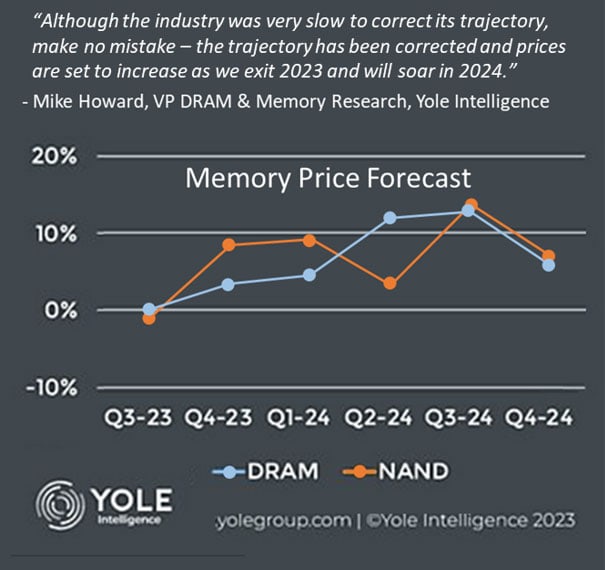

The accelerating pace of innovation continues to shorten product lifecycles, increasing the pressure on supply chain resilience and design flexibility.

The past year has been challenging for memory suppliers. Independent analysts report that customer inventory levels have been depleting while demand has been increasing. Supplier production levels and capacity investments have been cut back.
Additionally, a new post-COVID supply/demand balance has been reached with price stabilization after price declines not seen in 15 years.
The Changing Market
Industry pundits forecast that suppliers will be slow to increase capacity as they need time to recover. DDR4 supply is expected to tighten as mainstream demand shifts to DDR5. And eMMC growth is expected to continue. Price increases are projected to resume and accelerate as we enter a period of undersupply by 2024.
Now is the time to ensure your supply is stable for the period ahead. Qualify SMARTsemi DRAM, eMMC, and Flash Cards today.

As your supply chain partner, we understand your challenges sourcing components for long-life applications, and we’ve aligned our priorities with yours, including long term relationships and supply agreements with Tier-1 manufacturers.

SMARTsemi is a premier source of commercial, industrial, and wide/automotive temperature grade memory components. From legacy to mainstream, our DRAM and FLASH eMMC devices and SD Cards are processed for the high-reliability and quality that long-life applications need.

Our digital platform is designed to minimize your effort to search, select, sample, and source products from our authorized stocking distributors or from us.

Your search for a component doesn’t end with SMARTsemi part numbers. Through SMARTsemi SOURCEplus we secure inventory for you from other Tier-1 and quality suppliers when a SMARTsemi part is not available.
Put our team to work for you. We’re not just a supplier, we’re your trusted sourcing partner.